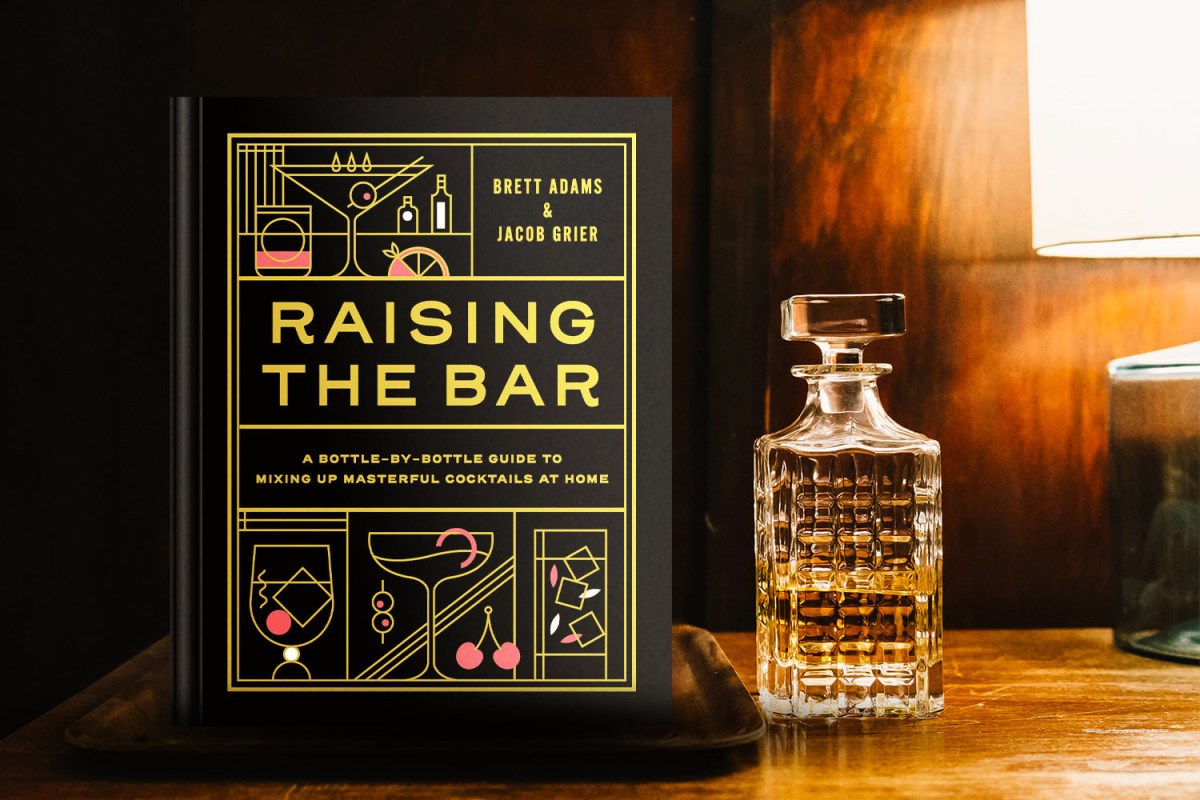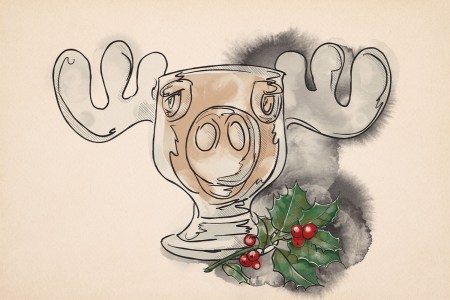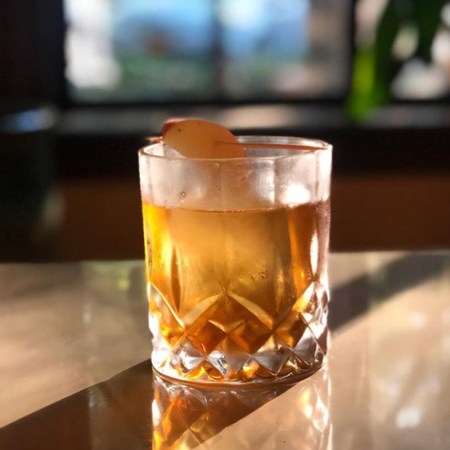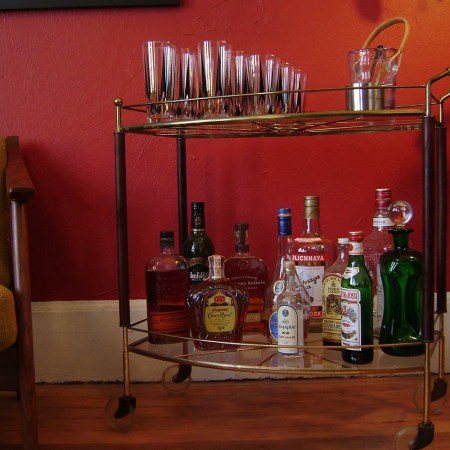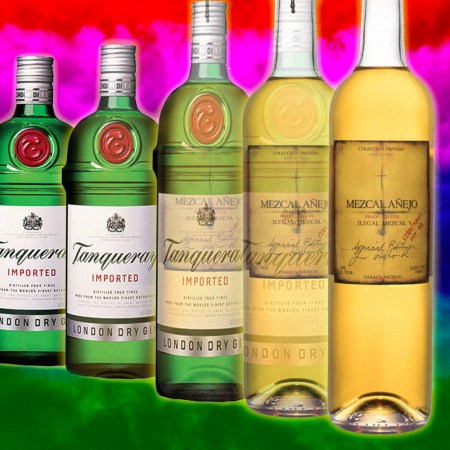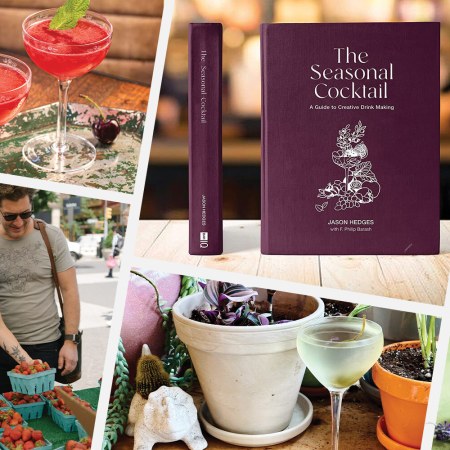The problem with making drinks at home is that most mixology books assume the average home bartender possesses both bottles and skills that are rarely found outside the world’s best cocktail dens. And that’s an issue that Raising the Bar hopes to solve. Written by drinks vets Jacob Grier and Brett Adams — both InsideHook contributors — this is a versatile cocktail recipe guide for the everyday drinks maker. Forget complex infusions and single-use spirits because this is the rare cocktail tome that’s both educational and actually useful for a non-professional.
“Most cocktail guides aren’t written with the home bartender in mind,” they write in the book’s intro. “When we’re at home, we tend to rely on a simpler arsenal.”
The Secret to Good Eggnog Is Aging, So Start Making It ASAP
No, it won’t go bad. In fact, it will get better.Besides offering a streamlined guide, the format of Raising the Bar is also incredibly helpful for bartending amateurs. The book is divided in half by “classic” and “advanced” drinks, and chapters are themed by spirits (so you’ll find bourbon and gin in the front and Cynar and Fernet in the second half).
We asked the authors about their inspiration and some advice for the home bartender, along with a few recipe ideas for the holidays.
InsideHook: Was there a particular pet peeve or moment or event that brought this book about?
Jacob Grier: This book was born partly from our frustration with how hard it is to make the drinks in contemporary cocktail books. We both have huge home bars, but we would be excited to browse through new books and end up struggling to find anything we could readily make. And if we had that problem, we knew that more typical people do too.
IH: What’s the biggest issue home bartenders have with cocktail books?
JG: Ten to 20 years ago, a mixologist could make their name by making fairly accessible drinks. But now that space has been so thoroughly explored, if you want to stand out as original, you have to get into really esoteric ingredients or complex preparations.
Brett Adams: A lot of books are arranged by spirit type or in alphabetical order by drink name, and that’s great when it comes to searching for a particular drink but a somewhat imperfect way to teach people about cocktails. It can feel really frustrating to buy a random liqueur you’ve never heard of, not knowing why it worked in the drink you used it for and unsure of how to use it in any other drink.
IH: Are cocktails today too complex?
BA: Yes and no. No drink needs a ton of ingredients to be good — a few of my favorites from the book are two ingredients drinks. But complexity can be great, too. I think a lot about music production when I think about cocktails; in that vein, no person in their right mind would listen to Queen and conclude that Freddie Mercury shouldn’t have harmonized so much with himself. The beauty and brilliance of that band is how well they stacked layer upon layer of sounds to create timeless music. At the same time, the White Stripes, Nirvana or basically all the punk bands that changed my life succeeded by stripping away everything that wasn’t necessary. What makes both approaches work is that the practitioners are experts and have a clear understanding of how to function within strict limits or dealing with excess.
I’ve tried a lot of three-ingredient drinks that could have really used a fourth ingredient, and I’ve tried way more than my share of eight-ingredient drinks that didn’t need to exist. It’s about balance and figuring out your take on it and that just takes time to learn.
IH: Are there any bartenders you think would fit into this concept of attainable, easy-to-make drinks at home?
JG: My friend Peter Suderman is an amateur bartender in the best sense of the term and writes a great newsletter intended specifically for home bartenders. Most of the drinks he covers are pretty approachable for a reasonably stocked home bar.
BA: Our friend Jordan Hughes does a great job of making approachable but great drinks from an impressively educated perspective, especially considering he’s never worked as a bartender.
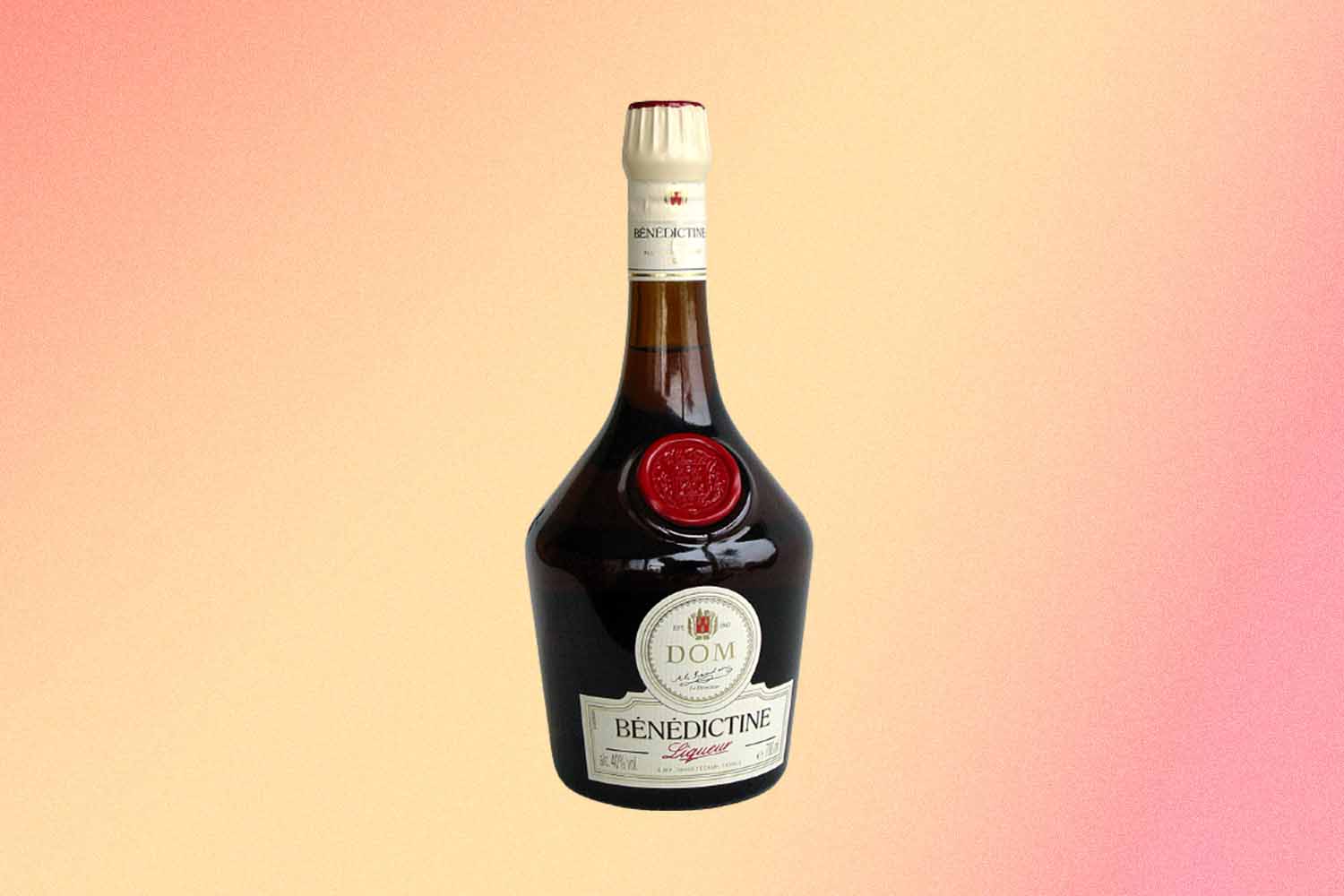
IH: What’s the most versatile ingredient or spirit for a home bartender?
JG: The herbal liqueur Benedictine. It just works in everything. You can use a tiny bit with rye and cognac in a Vieux Carré, pair it with mezcal in a sour or make it the star of the show.
BA: Apple brandy. It’s the ultimate wingman in drinks and it’s shocking how much it shows up in classics and how rarely it’s talked about now. One example is The Dempsey; it’s from an old cocktail book from 1923 called ABCs of Mixing Drinks, and it’s a combination of gin, apple brandy, grenadine and absinthe. It reads weird but it’s so good. It’s also cool to see how something excessively botanical, like absinthe, can function as bitters in a drink.
IH: One thing that surprised me here was the emphasis on dilution — can you expand on that?
BA: Dilution is often seen as a negative thing and people reflexively try to avoid it, hence those dumb whiskey stones. But it’s a key component in literally every single cocktail. It’s a tool to be understood and used to your advantage. Cocktails are made from very potent ingredients, be it straight spirits, acidic juices or sweet syrups. Proper dilution is often the key step that makes those otherwise overwhelming flavors actually enjoyable.
Below, two holiday-appropriate recipes from Raising the Bar:
Brandy Punch À La Goldie
Prep Time: 15 minutes
Servings: 8-10
Ingredients
- Peel of 1 lemon
- Peel of 1/2 orange
- 1/4 cup demerara sugar
- 2 oz. fresh lemon juice
- 1 oz. fresh orange juice
- 8 oz. cognac
- 3 oz. Benedictine
- 1 tsp. Angostura bitters
- 1 750 ml. bottle sparkling wine
- Freshly grated nutmeg, for garnish
Directions
-
-
In a punch bowl, muddle the citrus peels and sugar, pressing to extract juice from the citrus, and let rest for about an hour.
-
Add the lemon and orange juices and stir to dissolve the sugar.
-
Add the cognac, Benedictine and bitters, and stir to combine
-
Immediately before serving, add the bottle of sparkling wine.
-
Slip in a block of ice or large ice cubes and grate nutmeg over the surface of the punch. Ladle into individual glasses.
-
Queen Bee
Prep Time: 15 mins
Servings: 1
Ingredients
- 3/4 oz. vodka
- 3/4 oz. elderflower liqueur
- 3/4 oz. fresh lemon juice
- 1/4 oz. honey syrup
- 1 oz. sparkling wine
- Lemon peel or cranberries, for garnish
Directions
-
-
Add the vodka, elderflower liqueur, lemon juice and honey syrup to a shaker with ice.
-
Shake and strain into a chilled coupe glass.
-
Top with sparkling wine, garnish with a lemon peel or cranberries, and serve.
-
Reprinted from Raising the Bar: A Bottle-by-Bottle Guide to Mixing Masterful Cocktails at Home by Bret Adams and Jacob Grier, with permission by Chronicle Books, 2022. Illustrations © Woody Harrington.
Every Thursday, our resident experts see to it that you’re up to date on the latest from the world of drinks. Trend reports, bottle reviews, cocktail recipes and more. Sign up for THE SPILL now.
